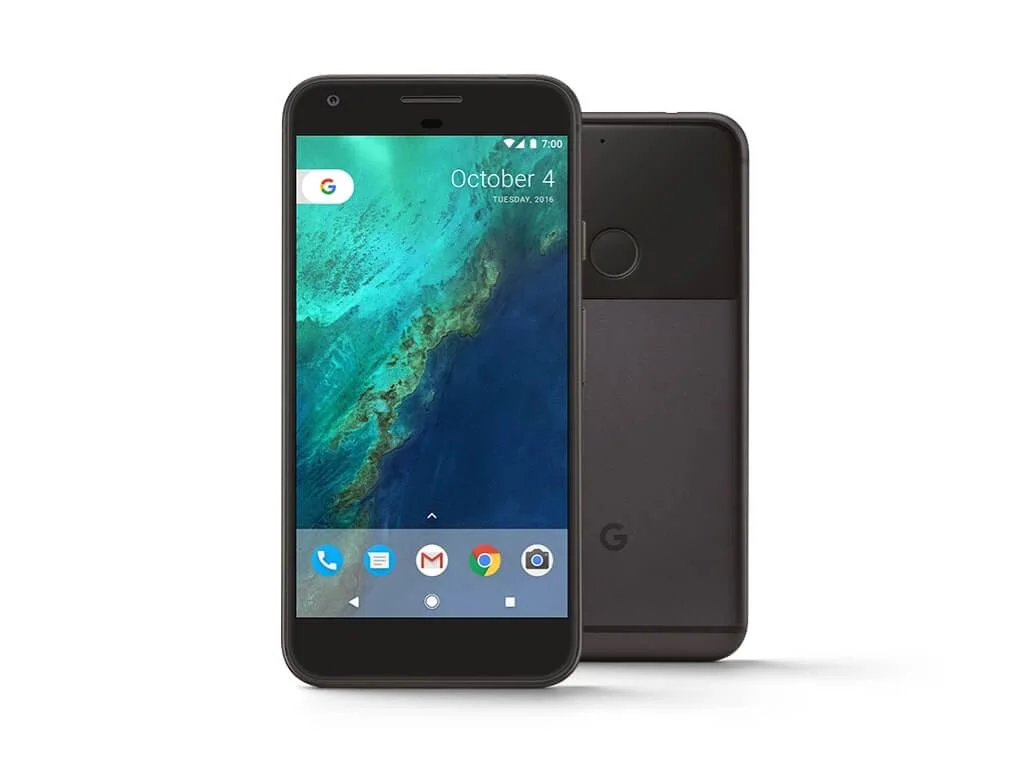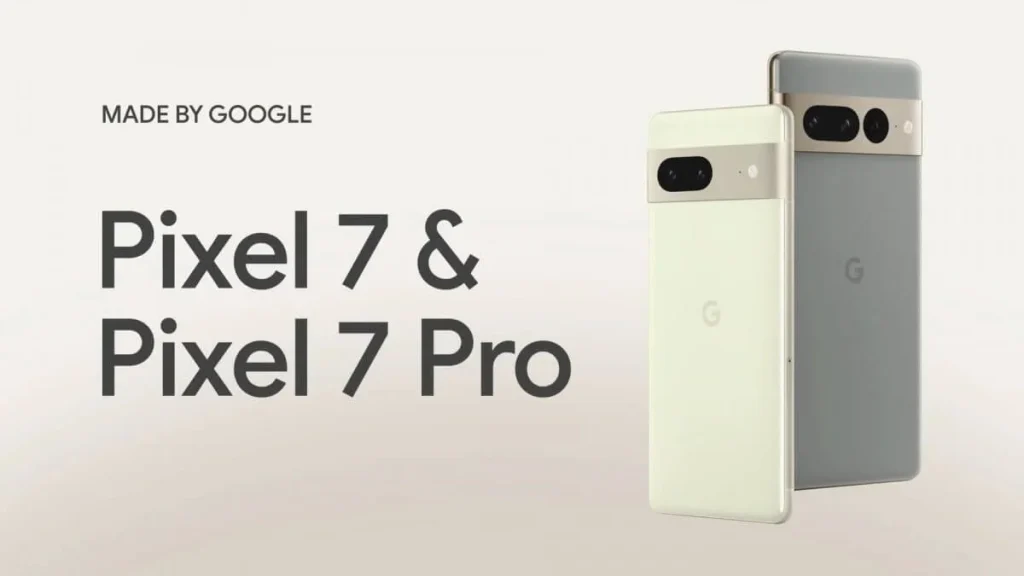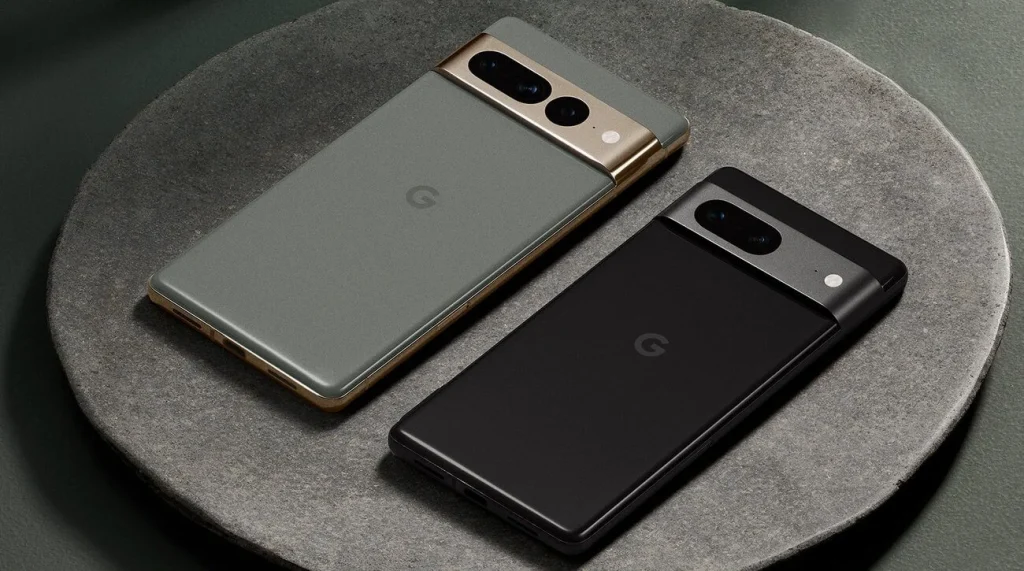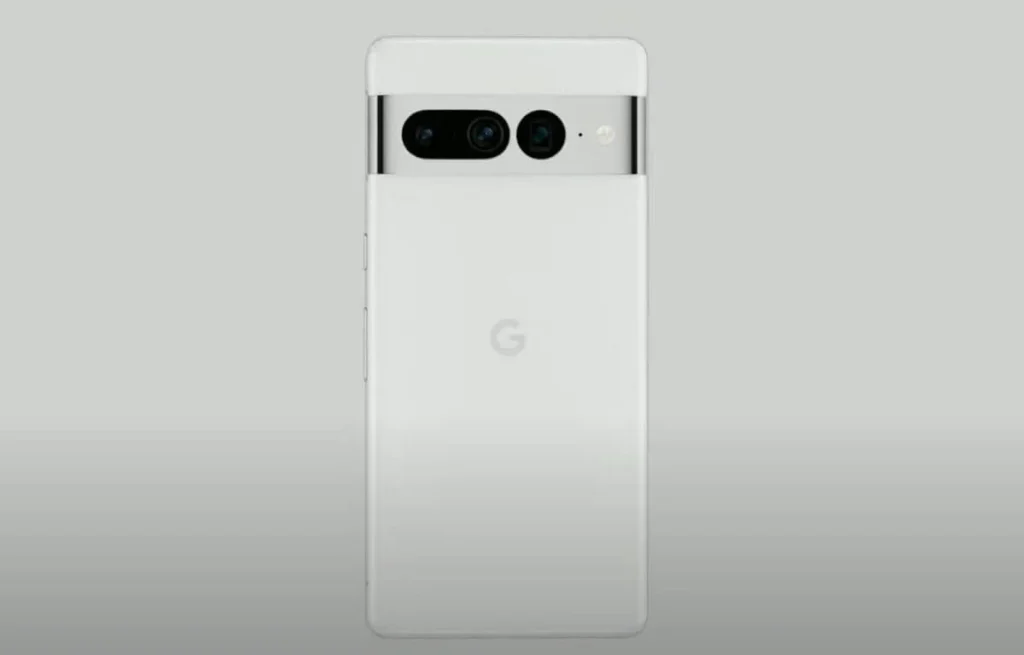Google is a company that we likely would have solely correlated with the internet. After all, you’re probably reading this on a Google Chrome browser, right?
That said, Google’s parent company, Alphabet, has been looking to become more than just an internet browser company. They’ve been introducing the Pixel, their flagship phone, since 2016, and they haven’t looked back. Despite being late entrants to the portable phone trend, Google’s size and established branding have made a sizable dent in the phone market; with 2.7 million deliveries of the Google phone in 2020 alone.
This number may be dwarfed by the over 200 million phones delivered by the other options; namely Apple and Samsung, but it’s still really good considering how late Apple was to the phone party.
The new Pixel phone, the Pixel 7 is Google’s flagship phone. Here’s where it stacks up in the rising tech world.
History of The Pixel
The Pixel wasn’t the first time that Google attempted to enter the phone market. Its first brainchild was the Google Nexus, which was a collaboration between Google and other phone partners. The Nexus, at the time, had partners for designs and input whereas we had the Pixel which was purely just Google’s doing. Think back to when the Nexus first came out: we saw Nexus devices from brands like Samsung, Asus, HTC, and LG, and the devices sold by these brands all carried the Nexus branding.
It was always a device with Google’s name where someone else carried some of the credit.
Enter The Google Pixel.

Photo from notebookcheck.net
2016 rolled around and Google replaced the Nexus smartphones with its new Pixel Series. This era was marked by the release of the first two Pixel smartphones.
They were made out of metal and glass. They weren’t the thinnest phones out there but they did stand out back then. The initial Google Pixel phones were shipped out with Android 7.1 Nougat and used the Snapdragon 821 64-bit quad-core processor – far weaker than the Tensor G2 used in today’s Google chips. It also featured 4 GB of RAM and came in 32 GB or 128GB storage options.
This was one of the most shocking features to look back on because imagine having a phone these days that could only store up to 32 GB of anything. That’s crazy.
The best feature of the Google Pixel at the time was its 12.3-megapixel camera which was included on the back of both devices. It was considered to be the best camera in its class. They also had an 8-megapixel front-facing camera but let’s be honest here, who really uses that?
Over the next couple of years, Google started to release version after version of the Google Pixel, and while there were great improvements to the product, nothing about it really stood out.
It wasn’t until the Google 6 and the Google 6 Pro were announced in October 2021 that Google wowed a lot of tech reviewers. The Google Pixel 6 was significant in that it was easily recognizable with the visor-like back design.
The Google 6 and 6 Pro were significant because they used a different main camera sensor and Google’s first-ever smartphone processor, the Google Tensor SoC.
The main camera sensor used in these phones ended up being the ISOCELL GN1 from Samsung. The two phones have high refresh rate displays, a 90Hz and 120HZ display on both phones depending on the version you buy. Of course, these phones also supported 30W fast wired charging and 23W wireless charging.
Here’s something cool to think about: The Google Pixel 6A was announced in May 2022 – which many consider to be out of the usual tech announcement schedule.
Soon after though, the Google Pixel 7 and Pixel 7 Pro were announced.
Who are Pixel Phones for?
If you’re looking for a great phone at a more affordable price, the Google Pixel 6A is probably good enough for most people. For only $449, a Google Pixel 6A is bringing you a sharp OLED screen, that despite its 6.1-inch screen, brings out the best of the display. With a Gorilla Glass screen, you’ll probably never break the screen so bad that you’ll need to replace the phone. It’s good enough to last for a couple of years — but it’s not the best.
Without a shadow of a doubt, the Google Pixel 7 is for the individual looking to have the best of the best – at still reasonable prices compared to other flagship phones. The Pixel 7 sells for about $599 on Amazon and Target in the United States but this higher price brings about some improvements compared to the 6A as well. We see the Google Pixel bring about wireless charging, slightly better IP68 water resistance, and everyone’s favorite Face Unlock to quickly access your phone.
This phone is for the people who want the best and know that they deserve it. Whether it’s for business, trying out new technology, or just wanting a phone that will last you the next 3 years, this is the perfect option for you.
Tensor G2, the better camera system, and 5 years’ worth of security updates ( though you’ll only likely get three years of software updates as Google announced) all mean that you could keep this phone running for as long as you’d like.
This phone is perfect for the person looking to live a lavish lifestyle. In the same way, Crown Asia can be your perfect home developer as it brings you house and lots for sale that fit any vision, you may have for an upscale lifestyle. Interested? Make sure to check us out on our website and see what the leading home developer in the Philippines has to offer.

Photo from gsmarena.com
The Google Pixel 7: First Impressions
There’s always a big and small phone. The Pixel 7 and the Pixel 7 Pro were unveiled earlier this week, and there’s a lot we can uncover about them. They look like the Pixel 6 – with the very Cyclops-esque visor that’s now metal instead of glass. Fear not, as this Pixel 7 is matte and the Pixel 6 comes off as glossy.
The Pixel 7 Pro comes in with a telephoto lens, more RAM, and a better display. The Pixel 7 screen is flat again, whereas the Pixel 7 Pro screen curves ever so slightly toward the end. If that’s a thing that you like out of your smartphones, we won’t blame you.
The Pixel 7 is a bit smaller than the Pixel 6 though both smartphones use Google’s Tensor chip.
Comparing the Pixel 7 to the Pixel 7 Pro, the Pro version has a larger 6.7-inch screen and a more fluid `120-HZ screen refresh rate, making it more fluid and a little bit brighter on a sunny day. While this means more battery consumption, the Pixel 7 Pro is also outfitted with a larger 5,000-mAh battery that lasts a full day and a half considering average use. You can get up to 72 hours with its extreme battery saver feature.
One thing that should convince you to pick up the Pro version, though, is the camera. The Pixel 7 Pro has a 5x optical camera so you can quickly get clear shots from a distance. If you pair this with the machine learning algorithms that Google has created, namely Super Res Zoom, then you find that you could just as easily capture photos from 2X all the way up to 30X with minimal quality loss. Of course, the more you zoom in, the more grainy the image that comes out – so you’ve got to be careful about how zoomed in a photo could get. The ultrawide camera now also has an autofocus that enables a Macro Focus mode so that you can snap sharp photos of super close-up subjects. However, there isn’t a dedicated photo gallery app built on the phone. You have to open the Google Photos app to access your photos.
Google also improved phone calls on the new phone via a new Clear calling capability. This makes hard-to-hear calls, clearer.
Anyway, before we geek out even more on the offerings of the Pixel, let’s move on to the pros and cons of the Google Pixel 7 and Google Pixel 7 Pro.

Photo from blog.google
The Google Pixel Review: Pros
Here’s a list of all the Google Pixel 7 pros that we could think of.
Great Value For A Flagship
We mentioned earlier that the base price of the Google Pixel 7 starts at around $599. The Pixel 7 with additional features from Google Put starts at $699, and the Pixel 7 Pro starts at $759.
For reference, the iPhone 14 Pro Max at 128GB starts at $999 at minimum. Getting it here would set you back about Php 77,990 to account for shipping and handling.
It’s easy to see how much value you’re getting just by purchasing a Google Pixel 7 Pro, $250 cheaper than the iPhone 14 Pro Max – its Apple counterpart.
It’s Display
The Google Pixel 7 comes with a 6.3-inch OLED display. First of all, it just has to be OLED. Otherwise, what sort of flagship phone would it be?
What we would like to point out though is that the Pixel 7 comes in with an adaptive 90Hz refresh rate while the Pixel 7 Pro brings in a 120Hz refresh rate. Now, these numbers are significant considering that the iPhone 14 only has a 60Hz display through its Pro Max counterpart has a 120Hz display.
What’s interesting to note is that the higher refresh rate might be an advantage to Google as their software development kit, Flutter, can have apps run to at least 120Hz if the display allows.

Photo from unbox.ph
The Cameras
The camera remains the key argument of any Pixel user. They’re just too good as the Pixel 7 offers a 50MP main camera and a 12MP ultrawide lens. The base version doesn’t offer a telephoto lens but the Pixel 7 Pro does. The New Tensor chipset (which we’ll discuss later) also improves the zoom capability of the phone.
The Google Pixel Review: Cons
Of course with every good thing, comes bad things that serve as tradeoffs that you should know about.
Performance Lags
The Google Tensor G2 is the chip behind the Google Pixel 7 series – it’s also very likely going to be the chip behind the rest of the Google Pixel series until further notice. If you remember earlier, we mentioned how Google’s Nexus line was really just a line of products in partnership with other, larger, and more experienced businesses. We also mentioned how Google dropped the line entirely to pursue something of its own in the Pixel.
Ironically, the Tensor G2 is made by Samsung.
Compared to its initial release, the Tensor G2 has kept the 2+2+4 core cluster configurations that the original Tensor GS101 had used. This configuration complies with what usually occurs in multi-core processors where there exist two super-big cores that carry the brunt of the workload, two more normal cores, and four smaller ones. Compared to the original GS101 used though, the G2 is about 10% to 15% faster (based on Geekbench results) due to the replacement of the A76 cluster for the A78 cluster.
Unfortunately, Tensor G2 isn’t all that it set out to be.
Even though the Tensor G2 has presented so many unique features, the chipset continues to lag behind its counterparts. The Google Pixel 7, according to Geekbench, turned in a single-core score of 1,054 and a multicore score of 3,021 when run to measure overall performance. Far below its counterparts that brought in at least 1.2k or 3.3k in these tests.
No Improvement To Battery Life
Another thing that Google failed to improve on was battery life. Even though Google promised that they’d be interested in improving the Pixel’s battery life, their choice to put in a smaller 4,355 power cell really confused people.
In response, Google claims the Tensor G2 would bring about power efficiency. Whether that offsets the smaller battery capacity, we shall see but initial tests from Toms Guide show that even with the 90Hz refresh rate turned off, the Pixel can only clock in at about 7 hours on any test, far off from the 10-hour mark which has been considered standard for most smartphones.
Read more: Making Your Home a Smart Home

